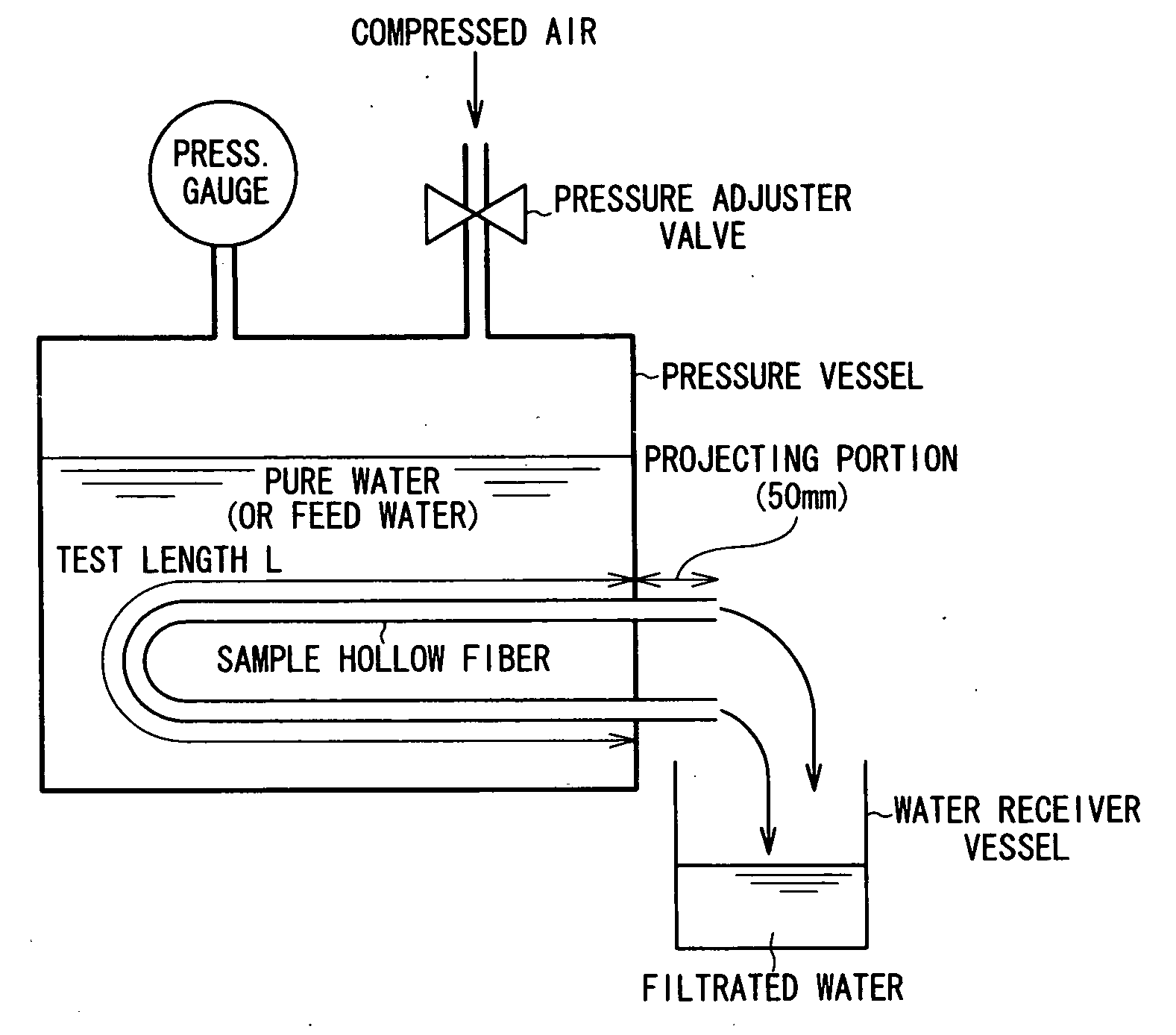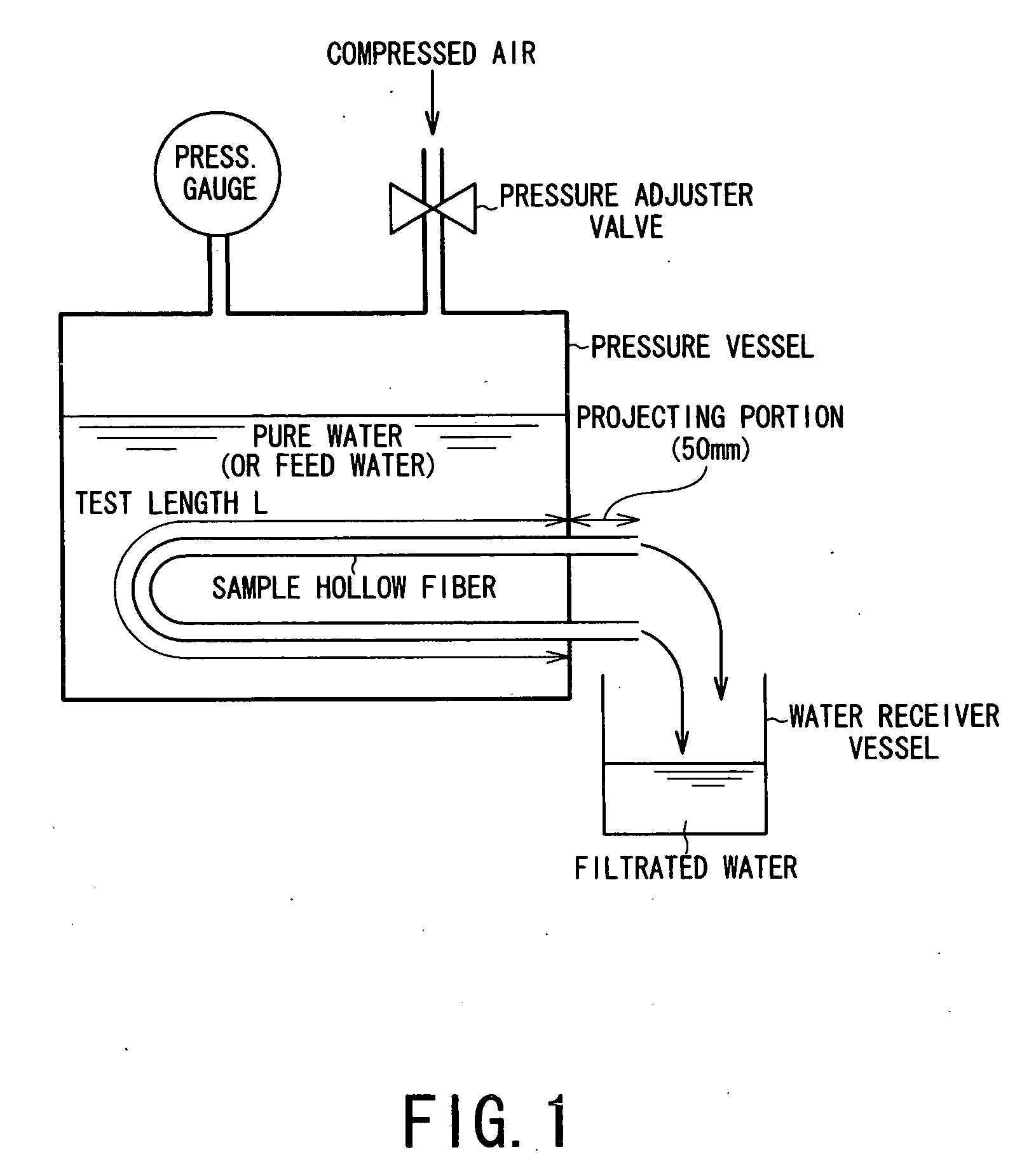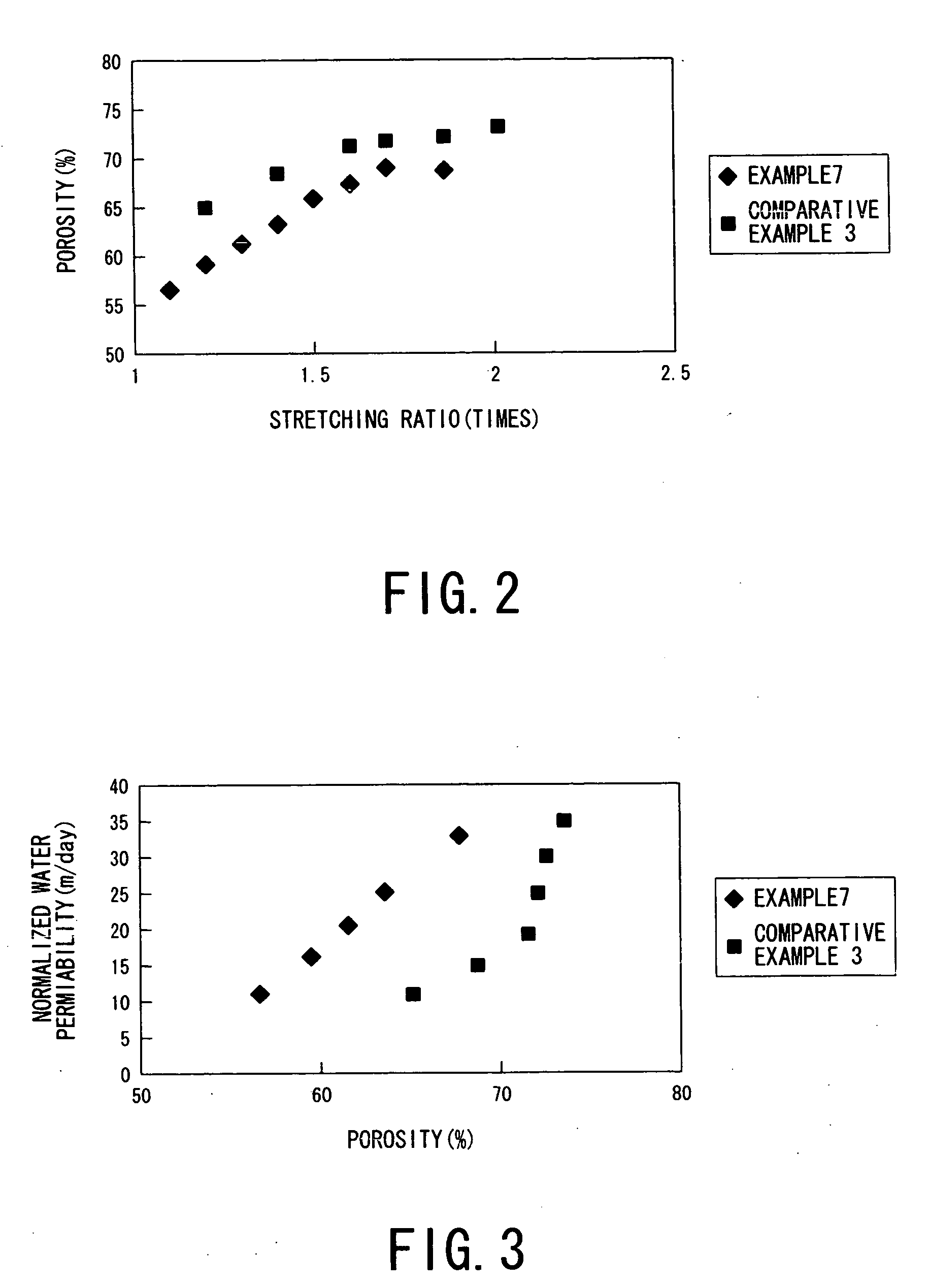Vinylidene fluoride resin hollow-fiber porous membrane and process for production of the same
a technology of vinylidene fluoride and hollow fiber, which is applied in the direction of membranes, separation processes, filtration separation, etc., can solve the problems of increasing the density of the dense layer, reducing the water permeation rate, and lowering the porosity, so as to reduce the density layer pore size, and increase the density layer thickness
- Summary
- Abstract
- Description
- Claims
- Application Information
AI Technical Summary
Benefits of technology
Problems solved by technology
Method used
Image
Examples
example 1
[0080]A medium-to-high molecular-weight vinylidene fluoride resin (PVDF) (powder) having a weight-average molecular weight (Mw) of 4.12×105 and an ultra-high molecular weight vinylidene fluoride resin (PVDF) (powder) having Mw=9.36×105 were blended in proportions of 75 wt. % and 25 wt. %, respectively, by a Henschel mixer to obtain a PVDF mixture (Mixture A) having Mw=5.43×105.
[0081]An adipic acid-based polyester plasticizer (“PN-150”, made by Asahi Denka Kogyo K.K.) as an aliphatic polyester and N-methyl-pyrrolidone (NMP) as a solvent were mixed under stirring in a ratio of 68.6 wt. % / 31.4 wt. % at room temperature to obtain a plasticizer-solvent mixture (Mixture B).
[0082]An equi-directional rotation and engagement-type twin-screw extruder (“BT-30”, made by Plastic Kogaku Kenkyusyo K.K.; screw diameter: 30 mm, L / D=48) was used, and the PVDF mixture was supplied from a powder supply port at a position of 80 mm from the upstream end of the cylinder and the plasticizer-solvent mixture...
example 2
[0088]A hollow-fiber porous membrane was prepared in the same manner as in Example 1 except for supplying the adipic acid-based polyester plasticizer (made by Asahi Denka Kogyo K.K. “PN-150”) as an aliphatic polyester and N-methyl-pyrrolidone (NMP) at a mixing ratio of 65.0 wt. % / 35.0 wt. %, supplying the plasticizer-solvent mixture / PVDF mixture at a ratio of 202 / 100 (by weight), changing the stretching ratio to 1.2 times, and changing the relaxation rates to 1% under wet-heating at 90° C. and 1% under dry heating at 140° C. The thus-obtained hollow-fiber membrane was a gradient-network-texture membrane having pore sizes continuously increasing from the outer surface to the inner surface, and exhibited an outer surface pore size of 0.156 μm and an inner surface pore size of 0.724 μm (giving an inner / outer surface pore size ratio of 4.6).
example 3
[0089]A hollow-fiber porous membrane was prepared in the same manner as in Example 1 except for using a PVDF mixture obtained by blending 70 wt % of medium-to-high molecular-weight vinylidene fluoride resin (PVDF) (powder) Mw=4.12×105 and 30 wt. % of ultra-high molecular weight vinylidene fluoride resin (PVDF) (powder) having Mw=9.36×105, supplying the adipic acid-based polyester plasticizer (made by Asahi Denka Kogyo K.K. “PN-150”) as an aliphatic polyester and N-methyl-pyrrolidone (NMP) at a mixing ratio of 69.7 wt. % / 30.3 wt. %, supplying the plasticizer-solvent mixture / PVDF mixture at a ratio of 233 / 100 (by weight), changing the stretching ratio to 1.2 times, and changing the relaxation rates to 1% under wet-heating at 90° C. and 1% under dry heating at 140° C. The thus-obtained hollow-fiber membrane was a gradient-network-texture membrane having pore sizes continuously increasing from the outer surface to the inner surface.
PUM
| Property | Measurement | Unit |
|---|---|---|
| temperature | aaaaa | aaaaa |
| crystallization temperature Tc | aaaaa | aaaaa |
| pore size distribution | aaaaa | aaaaa |
Abstract
Description
Claims
Application Information
 Login to view more
Login to view more - R&D Engineer
- R&D Manager
- IP Professional
- Industry Leading Data Capabilities
- Powerful AI technology
- Patent DNA Extraction
Browse by: Latest US Patents, China's latest patents, Technical Efficacy Thesaurus, Application Domain, Technology Topic.
© 2024 PatSnap. All rights reserved.Legal|Privacy policy|Modern Slavery Act Transparency Statement|Sitemap



